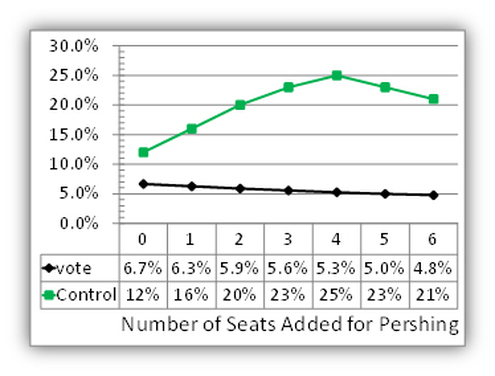Though the influence of ISS varies from company to company, the proxy voting advisory firm’s impact can be measured. (Originally published on Directorship.com)
There has been much ink spilled, angst and teeth gnashing about the outsized influence that Institutional Shareholder Services (ISS) holds, much of it based on broad averages—such and such a percentage of institutions subscribe to ISS, for example, or the average company in the S&P 500 has X percent of it shareholder base subscribed to ISS.
So exactly how much attention should you pay to these numbers? The truth is that the influence of ISS varies drastically from company to company. The best part—this can be measured.
In calculating ISS’s influence at a target company I once asked a well-known proxy solicitor working the case with me, “Roughly what percent of ISS’s subscribers end up voting along with ISS’s recommendations?” After some thought, he said “Oh, about 50 percent.” There is no need to break out the spreadsheet here. In this case, despite boasting a subscriber base holding over 20 percent of outstanding shares, ISS had exactly 0 influence. You’d expect the same level of agreement with the phases of the moon.
That said, I’ve worked on other cases where ISS was the absolute key to victory. (By the way, having a big effective-shareholder like ISS, who does what it says, isn’t all bad when compared to many large shareholders who will tell you what you want to hear and then vote the other way.)
Knowing ISS’s influence on your elections isn’t hard and isn’t abstract. You just need two things: a little information about your shareholder base and an analysis of where the voting power lies. The former tells you who subscribes to and votes with ISS. The latter tells you how much influence those shares have over the election.
Here is an example from a company I worked on recently: 12 shareholders representing 16 percent of the total outstanding shares subscribed to ISS. Of those, only seven with nine percent of outstanding shares regularly voted with ISS’s recommendations. In this company, this bloc of ISS-swayed voters, had a 53 percent chance of winning an election and a five-percent chance of swinging the election. An ISS recommendation for management would increase management’s odds of victory by 14 percent, while a recommendation against would only decrease their winning odds by 3 percent.
There you have it. ISS has been weighed and has been measured.
It won’t be the same answer for your company but the key point is that there is an answer. ISS’s influence is not abstract and cannot be calibrated by “a gut feeling.” It is measurable. Once you know how much sway ISS has on your election, you can plan accordingly, stop worrying about what the talking heads are saying and put that chunk of bandwidth back into making the company better.
There has been much ink spilled, angst and teeth gnashing about the outsized influence that Institutional Shareholder Services (ISS) holds, much of it based on broad averages—such and such a percentage of institutions subscribe to ISS, for example, or the average company in the S&P 500 has X percent of it shareholder base subscribed to ISS.
So exactly how much attention should you pay to these numbers? The truth is that the influence of ISS varies drastically from company to company. The best part—this can be measured.
In calculating ISS’s influence at a target company I once asked a well-known proxy solicitor working the case with me, “Roughly what percent of ISS’s subscribers end up voting along with ISS’s recommendations?” After some thought, he said “Oh, about 50 percent.” There is no need to break out the spreadsheet here. In this case, despite boasting a subscriber base holding over 20 percent of outstanding shares, ISS had exactly 0 influence. You’d expect the same level of agreement with the phases of the moon.
That said, I’ve worked on other cases where ISS was the absolute key to victory. (By the way, having a big effective-shareholder like ISS, who does what it says, isn’t all bad when compared to many large shareholders who will tell you what you want to hear and then vote the other way.)
Knowing ISS’s influence on your elections isn’t hard and isn’t abstract. You just need two things: a little information about your shareholder base and an analysis of where the voting power lies. The former tells you who subscribes to and votes with ISS. The latter tells you how much influence those shares have over the election.
Here is an example from a company I worked on recently: 12 shareholders representing 16 percent of the total outstanding shares subscribed to ISS. Of those, only seven with nine percent of outstanding shares regularly voted with ISS’s recommendations. In this company, this bloc of ISS-swayed voters, had a 53 percent chance of winning an election and a five-percent chance of swinging the election. An ISS recommendation for management would increase management’s odds of victory by 14 percent, while a recommendation against would only decrease their winning odds by 3 percent.
There you have it. ISS has been weighed and has been measured.
It won’t be the same answer for your company but the key point is that there is an answer. ISS’s influence is not abstract and cannot be calibrated by “a gut feeling.” It is measurable. Once you know how much sway ISS has on your election, you can plan accordingly, stop worrying about what the talking heads are saying and put that chunk of bandwidth back into making the company better.

 RSS Feed
RSS Feed